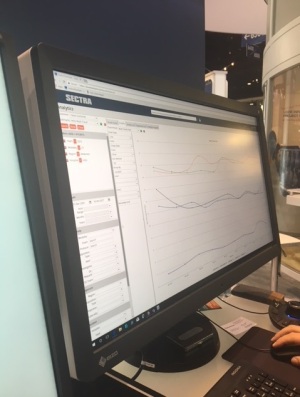by
John R. Fischer, Senior Reporter | December 07, 2017

Sectra DoseTrack is equipped with a
new functionality that allows it to
receive messages from non-ionizing
imaging modalities, such as MR
CHICAGO — Clinicians using Sectra DoseTrack will soon be able to analyze dosage data from additional imaging systems thanks to a new functionality.
The Sweden-based medical imaging IT company has programmed the next version of DoseTrack to receive and store messages in its database on dosage from non-ionizing imaging modalities, such as MR and ultrasound, thereby introducing new capabilities, such as gadolinium tracking, for enhancing patient care, safety and workflow.
Until now, DoseTrack could retrieve and store information from ionizing sources, such as CT, but was unable to do the same with non-ionizing systems. A DoseTrack solution with the integrated feature was on display at the 2017 Radiological Society of North America (RSNA) annual conference.



Ad Statistics
Times Displayed: 138218
Times Visited: 7981 MIT labs, experts in Multi-Vendor component level repair of: MRI Coils, RF amplifiers, Gradient Amplifiers Contrast Media Injectors. System repairs, sub-assembly repairs, component level repairs, refurbish/calibrate. info@mitlabsusa.com/+1 (305) 470-8013
“The product was initially designed to capture and analyze radiation delivered to patients,” Ian Judd, product manager at Sectra, told HCB News. “It was a natural progression in terms of functionality to next cater to non-ionizing modalities such as MR and US. Many customers are starting to use appropriateness criteria and vetting and justification of ionizing procedures. One of the natural effects of these changes in ordering methodology will lead to a shift in the case mix for each organization. A system like DoseTrack is able to spot these trends as orders are moved away from ionizing techniques or higher-dose techniques under certain circumstances, to help the customer monitor this process.”
Retention of gadolinium-based contrast agents (GBCAs) can cause serious repercussions, including nephrogenic systemic fibrosis, an incurable and potentially life-threatening disease. Research also indicates that deposits of gadolinium may accumulate in the brain, with the FDA currently investigating this risk.
Being able to track agents like gadolinium will enable health care professionals to identify trends and make changes in protocols throughout facilities to better protect patients.
Other enhancements to DoseTrack include a new dashboard, and enhanced workflow in nuclear medicine environments through the gathering of nuclear medicine isotope data electronically rather than manually, thereby improving image record and analytics capabilities of users.
The new version will also enable customers to see full imaging records across all modalities and departments including cardiology in a single view for the first time, ensuring greater comprehension of patient information which can be provided to referring clinicians and other key users in hospitals. With proper access controls and information governance permission, wider views on regional and national scales can also be achieved for further avoidance of unnecessary radiation and administration.
“Monitoring the use of contrast has obvious cost benefits to see if the amount ordered and used is optimal,” said Judd. “The important use case in terms of gadolinium is to provide customers with the ability to capture and monitor the use of this contrast to give clear alerts of any patients who may be at risk from multiple uses of the agent.”
The new version is set for release in the spring of 2018.

